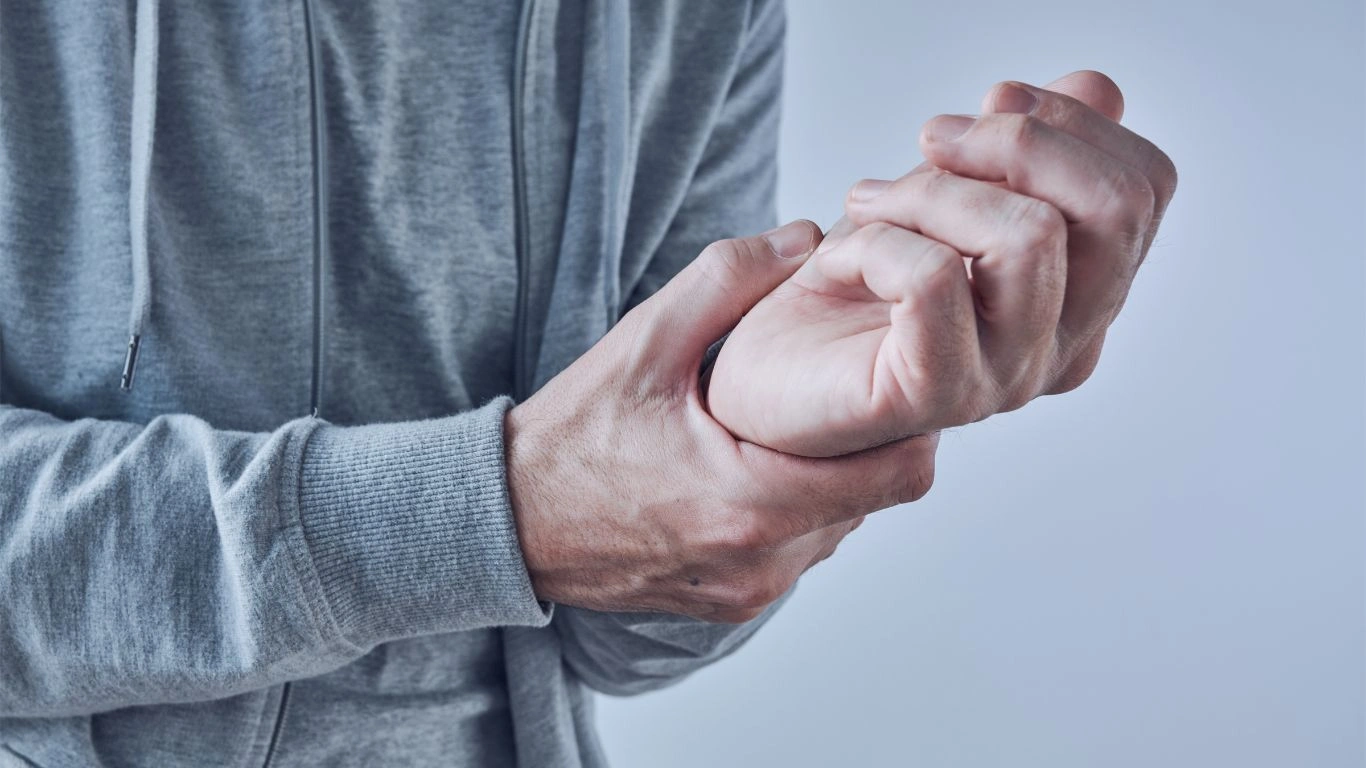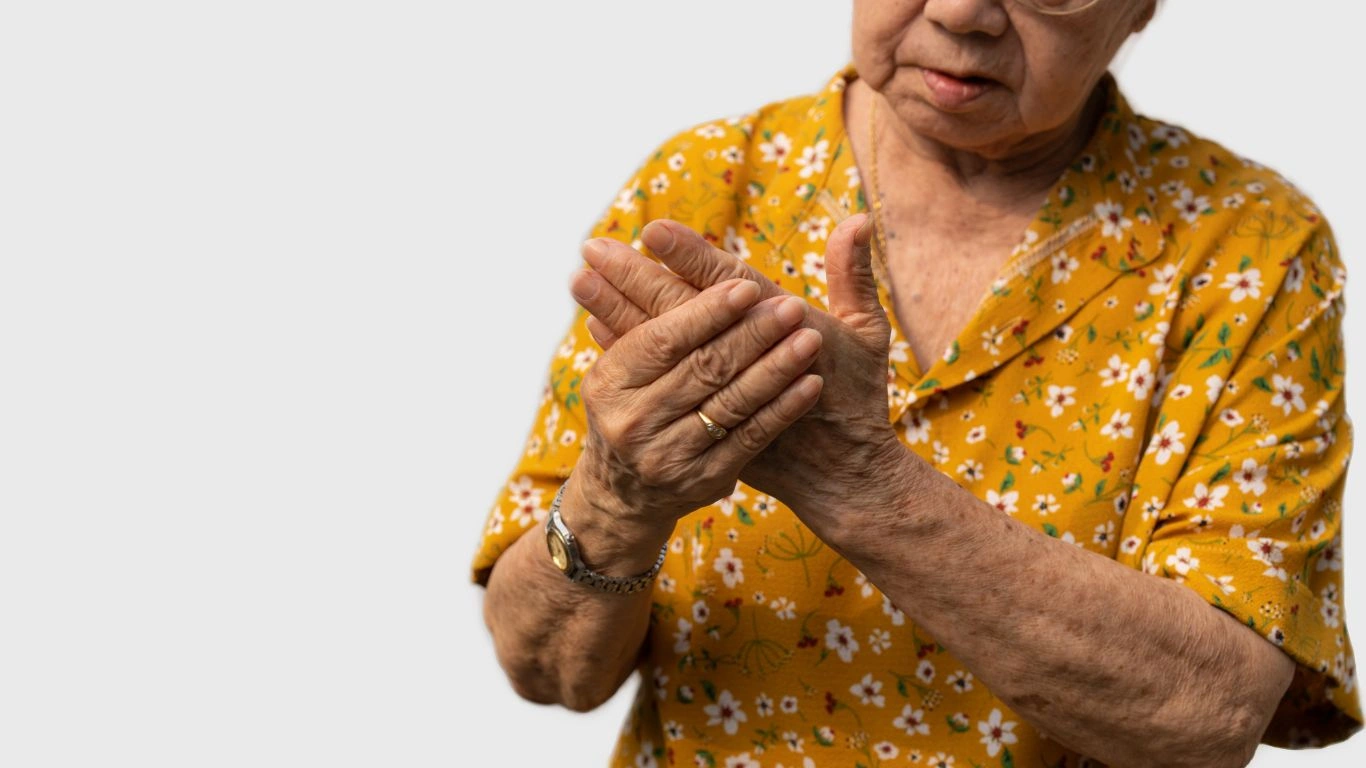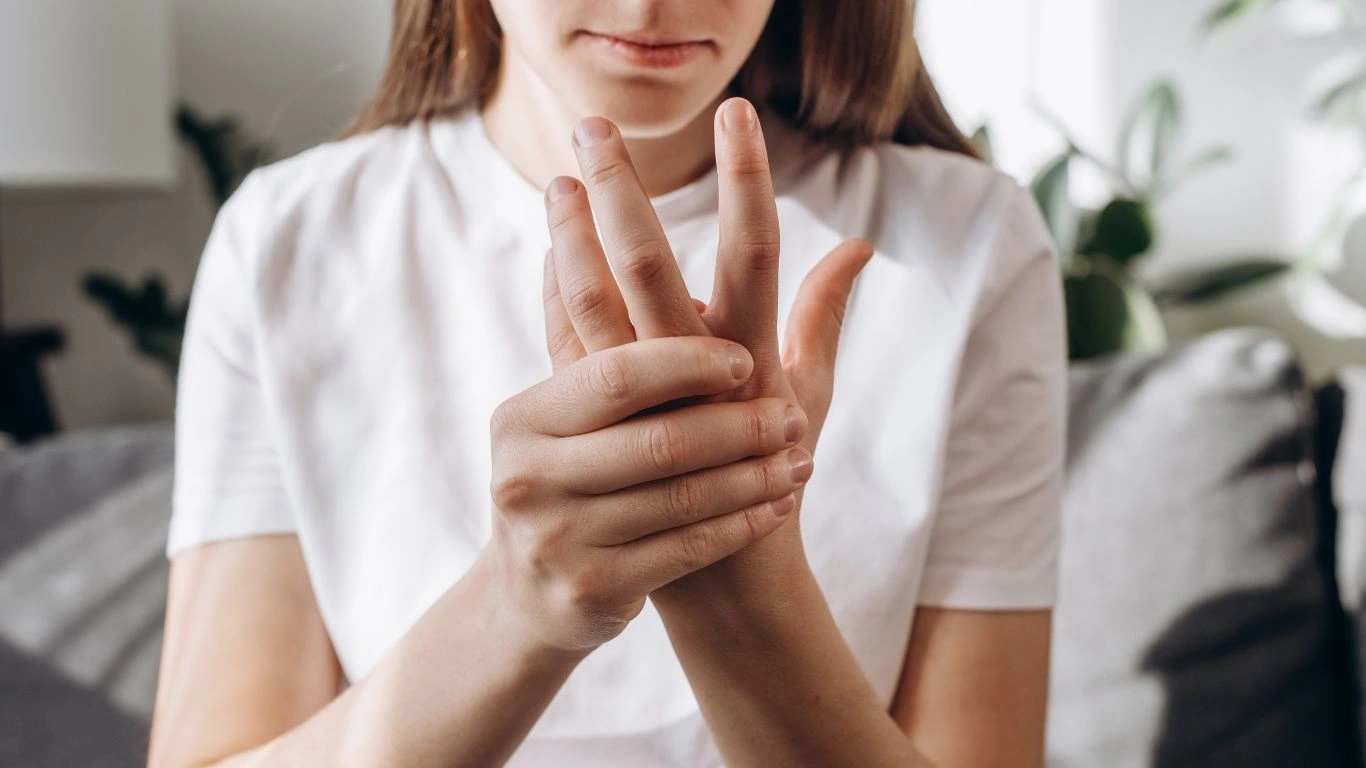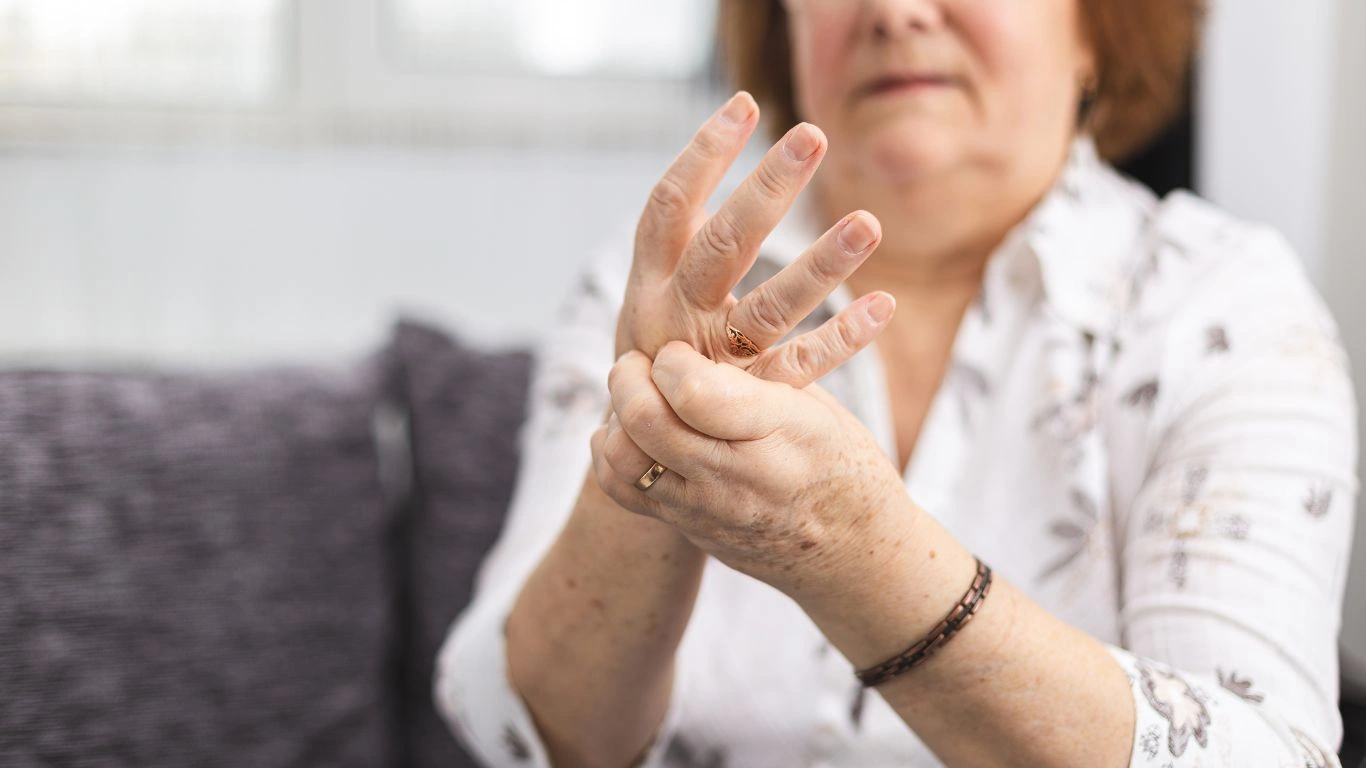10 Effective Ways to Relieve Morning Joint Stiffness from Rheumatoid Arthritis
If you’ve ever woken up with aching, stiff joints, you know just how frustrating it can be. As someone who has worked as a Rheumatology Nurse Practitioner for years, I’ve seen countless patients come to me with complaints of morning joint stiffness, often wondering if there’s anything they can do to relieve the discomfort. If you suffer from rheumatoid arthritis (RA), you’re no stranger to this challenge. But here’s the good news: managing morning joint stiffness doesn’t have to be a daily struggle. With the right strategies and treatment plans, you can reduce stiffness, improve mobility, and start your day on the right foot. Let’s dive into some of the most effective ways to manage rheumatoid arthritis and find some relief from that dreaded morning stiffness.
Understanding Rheumatoid Arthritis and Its Impact on Morning Stiffness

Rheumatoid arthritis (RA) is an autoimmune disease where the body’s immune system mistakenly attacks its own joints, causing inflammation. This inflammation can lead to pain, swelling, and—unfortunately for many patients—morning stiffness. For those of us in the healthcare field, it’s clear that RA isn’t just about joint pain; it affects your whole life. Imagine waking up every morning and feeling like you’re trying to get your body moving through molasses. That’s what chronic morning stiffness can feel like for people with RA, and it’s no fun.
The good news is that while morning stiffness is a hallmark of rheumatoid arthritis, it doesn’t have to dominate your mornings. With the right approach to treatment and self-care, you can reduce those first moments of pain and get a better start to your day. But first, let’s break down why morning stiffness happens and what you can do to minimize it.
Why Does Morning Joint Stiffness Happen?
So, why does morning stiffness become such a big problem for people with rheumatoid arthritis? It all comes down to inflammation. During the night, when we’re not moving around much, the joints have a chance to “cool down” and become stiff. This is particularly true for those of us with RA, as our immune systems are more active during sleep, causing even more inflammation in the joints. In the morning, your body is waking up from a period of rest, and the stiffness you feel is a result of the inflammation that has built up overnight.
When you get up, your body is essentially trying to “reboot” itself, and this can be challenging for joints that are already inflamed and swollen. It’s no wonder that the first few moments of the day feel like a struggle. But just because it happens doesn’t mean it’s something you have to live with without help. In fact, there are several ways to manage and reduce that stiffness and the pain that comes with it.
Top Strategies for Morning Joint Stiffness Relief

While the exact strategies may vary from person to person, here are some of the most effective ways I’ve recommended to patients over the years to manage and even prevent that dreaded morning stiffness:
- Start Your Day with Gentle Movement – One of the best ways to combat morning stiffness is by gently moving your joints as soon as you wake up. I often tell my patients to start with some light stretching or even just moving around a little in bed. This helps get the blood flowing and the synovial fluid (which lubricates the joints) circulating, making it easier to move.
- Warm Up Your Joints – Heat therapy can work wonders. Applying a warm compress or taking a warm shower can help loosen up tight muscles and joints, making it easier to move. I always suggest keeping a heating pad or a warm blanket nearby, especially in the morning, to help your joints get the relief they need.
- Incorporate Morning Stretches – Light stretches targeting the affected joints can make a world of difference. This doesn’t have to be a full workout—just gentle stretches to open up the joints and increase circulation. Over time, this can help reduce stiffness and make getting out of bed less painful.
The Role of Medication in Managing Morning Stiffness

For many patients, medications play a critical role in managing rheumatoid arthritis and reducing morning stiffness. The goal of RA treatments is to reduce inflammation, prevent joint damage, and improve function. But, finding the right medication plan can be a process of trial and error. Common treatment options include:
- Nonsteroidal Anti-Inflammatory Drugs (NSAIDs) – These can help reduce inflammation and relieve pain. They are often used for short-term relief, but they don’t address the underlying cause of RA, so they are typically used alongside other treatments.
- DMARDs (Disease-Modifying Antirheumatic Drugs) – These drugs, such as methotrexate, are aimed at slowing down or halting the progression of RA. While they may take a few weeks to show results, they are incredibly effective in the long term.
- Biologic Medications – These are newer treatments that target specific parts of the immune system responsible for inflammation. Biologics can be very effective for patients who don’t respond well to traditional medications.
It’s essential to work closely with your rheumatologist to find the right medication that works for you. And always remember: the earlier you address your morning stiffness with appropriate medication, the better the chances of preventing long-term joint damage.
Diet and Lifestyle Changes to Help Manage Morning Stiffness

When it comes to managing rheumatoid arthritis and morning joint stiffness, it’s not just about what you put on your joints—it’s also about what you put in your body. Over the years, I’ve found that many of my patients experience significant improvements when they make simple changes to their diet and daily routine. It’s amazing how much of an impact lifestyle modifications can have on joint health.
First, let’s talk about anti-inflammatory foods. Since RA is an inflammatory disease, it makes sense that you’d want to focus on foods that help reduce inflammation in the body. Certain foods can help ease stiffness and improve mobility over time, such as:
- Fatty fish – Salmon, mackerel, and sardines are rich in omega-3 fatty acids, which are known for their powerful anti-inflammatory properties.
- Leafy greens – Kale, spinach, and other dark leafy vegetables are loaded with antioxidants and nutrients that help fight inflammation.
- Turmeric – This spice has been used for centuries in traditional medicine for its anti-inflammatory benefits. Incorporating turmeric into your diet (often paired with black pepper to increase absorption) may help relieve joint stiffness.
- Olive oil – A great source of healthy fats that can reduce inflammation and support overall joint health.
At the same time, you’ll want to avoid foods that may trigger or worsen inflammation, such as:
- Sugary snacks and beverages – High sugar intake can promote inflammation in the body. Cutting back on sweets can be an effective way to reduce stiffness and improve overall health.
- Processed foods – Foods high in trans fats, preservatives, and other additives can worsen RA symptoms. Try to minimize processed foods and focus on whole, natural options.
- Red meat – Some studies suggest that red meat, especially when consumed in excess, may contribute to inflammation. Consider replacing it with plant-based proteins or fatty fish.
In addition to dietary changes, staying active is key to reducing morning joint stiffness. I can’t stress enough how beneficial regular movement can be for people with RA. It may seem counterintuitive when you’re feeling stiff and sore, but gentle exercise can actually improve flexibility, strength, and reduce pain over time.
Best Exercises for RA and Morning Stiffness

When I recommend exercise to my RA patients, I always emphasize that it doesn’t have to be intense or high-impact. In fact, it’s important to avoid activities that put too much strain on the joints. Instead, the focus should be on low-impact exercises that promote joint mobility without aggravating symptoms.
Here are some of my favorite exercises that can help ease morning stiffness:
- Swimming – Water-based exercises are excellent for people with RA. The buoyancy of the water supports your body, allowing you to move without putting too much pressure on the joints.
- Yoga – Gentle yoga poses help stretch and strengthen the body, improve balance, and enhance joint mobility. Some patients even report a significant reduction in morning stiffness after practicing yoga regularly.
- Walking – A simple walk around the block can get the blood flowing and ease stiffness. If you’re just starting out, aim for short walks and gradually build up your stamina.
- Strength training – Building muscle around your joints can help reduce the load on them, making movements less painful. Light weights or resistance bands can be great tools for strengthening muscles without causing undue strain.
As with anything, consistency is key. Even 10-15 minutes of gentle movement first thing in the morning can go a long way in reducing stiffness and improving your overall mobility throughout the day. The best part? It can help you feel more energized and ready to take on the day!
The Importance of Rest and Recovery for RA Management
One of the most important but often overlooked factors in managing morning stiffness is rest. Yes, movement is crucial, but so is giving your body enough time to rest and recover. With RA, overdoing it can actually make things worse, which is why it’s so important to listen to your body and balance activity with rest.
I’ve worked with many patients who’ve learned the hard way that pushing themselves too much can result in flare-ups or increased stiffness the following morning. Instead, focus on getting quality sleep and taking breaks throughout the day when needed. Incorporating short rest periods can help your joints recover and reduce overall fatigue.
But rest doesn’t just mean taking a nap or sleeping through the night; it also means managing stress. Chronic stress can contribute to inflammation and exacerbate RA symptoms. So, make sure to incorporate some stress-relieving activities into your daily routine, whether that’s meditation, deep breathing exercises, or simply spending time with loved ones.
Supplements and Natural Remedies for Morning Stiffness Relief
In addition to dietary changes and exercise, many RA patients find relief from morning stiffness through supplements and natural remedies. While these shouldn’t replace traditional medical treatments, they can serve as effective adjuncts to your overall management plan.
- Fish oil supplements – As mentioned earlier, omega-3 fatty acids are anti-inflammatory, and taking fish oil supplements may help reduce morning stiffness.
- Glucosamine and chondroitin – These supplements are often recommended for joint health. While research is mixed, many patients report improvements in their joint pain and stiffness when taking these.
- Ginger – Known for its natural anti-inflammatory properties, ginger can be taken as a supplement or brewed into a tea to help ease joint pain and stiffness.
Before adding any new supplements or remedies to your routine, it’s always a good idea to talk to your healthcare provider. They can help guide you toward the best options for your specific condition and needs.
Tracking Your Progress: How to Measure Improvement in Morning Stiffness

Now that you’ve started making changes to your routine—whether it’s through medication, diet, exercise, or stress management—it’s important to track your progress. One of the biggest challenges people with rheumatoid arthritis face is figuring out if the changes they’re making are actually working. I always recommend to my patients that they track their symptoms over time. Not only does it help you stay motivated, but it also gives you valuable insights into what’s working and what’s not.
There are several ways you can monitor your morning stiffness, and these are some of the most helpful methods:
- Keep a Daily Symptom Log – I encourage my patients to keep a simple log where they record how they feel each morning. Rate your stiffness on a scale of 1 to 10, note how long it lasts, and any other symptoms you might experience (like swelling, pain, or fatigue). After a few weeks, patterns will start to emerge, helping you pinpoint which treatments and strategies are having the biggest impact.
- Monitor Flexibility – Track how your flexibility improves over time. A simple test is to try to reach your toes each morning. See if you can touch them more easily, or if you notice less discomfort as the days go by. This can be a good indication that your joints are becoming more flexible and that stiffness is decreasing.
- Joint Swelling – Another factor to keep an eye on is joint swelling. If you’re seeing a reduction in swelling over time, this is a clear sign that inflammation is being managed better. This will often correlate with less stiffness as well.
By tracking your symptoms consistently, you can have a much more productive conversation with your doctor, too. It helps them fine-tune your treatment plan and adjust your medications or therapies based on your actual experiences. This way, you’re not just going off how you feel in the moment but can also reflect on how your body is responding in the long term.
Managing RA Flare-Ups: What to Do When Stiffness Gets Worse

Even with the best efforts, it’s important to acknowledge that flare-ups can happen. These are periods where your RA symptoms—such as stiffness, pain, and swelling—worsen. They can be triggered by a variety of factors like stress, illness, or sometimes, without a clear reason. The key to managing flare-ups is being prepared and having a plan of action in place.
Here are some strategies that I’ve found to be effective for managing RA flare-ups:
- Increase Rest – When you’re experiencing a flare-up, it’s important to let your body recover. This means increasing the amount of rest you’re getting. Rest doesn’t mean just sleeping more—it’s also about giving your joints time to heal by avoiding overuse. While it’s still important to move gently, allow your body to recharge and repair itself.
- Adjust Medications – In some cases, your doctor may recommend temporarily adjusting your medication regimen during a flare-up. This might include adding in additional pain relief or anti-inflammatory medications or increasing the dosage of your disease-modifying antirheumatic drugs (DMARDs). Always communicate openly with your rheumatologist about your flare-up so they can help guide you through it.
- Apply Heat or Cold Therapy – Heat and cold therapies can help with flare-up symptoms. When the inflammation is high, applying a cold compress can reduce swelling. On the other hand, heat can help soothe and relax stiff muscles and joints. I recommend alternating both therapies to find what works best for you.
- Manage Stress – Stress can make flare-ups worse, so it’s crucial to incorporate stress-relieving techniques. Whether it’s mindfulness meditation, deep breathing exercises, or taking a walk outdoors, finding ways to manage stress can prevent it from making your symptoms even worse.
Flare-ups are a part of living with rheumatoid arthritis, but by staying proactive and following these strategies, you can minimize their impact on your daily life.
Working with Your Healthcare Team: A Collaborative Approach
Managing rheumatoid arthritis and morning stiffness is not a solo endeavor. It’s essential to work closely with your healthcare team, including your rheumatologist, nurse practitioner, and even other specialists like physical therapists or dietitians. As a nurse practitioner, I’ve seen firsthand how important it is to have a collaborative approach to care. Each team member brings unique expertise to the table, and together, we can develop a comprehensive plan that addresses every aspect of RA—pain relief, mobility, and overall quality of life.
Regular check-ups with your rheumatologist are key. During these appointments, you can discuss your symptoms, track your progress, and adjust your treatment plan accordingly. If you’re having issues with your medication or feeling like certain treatments aren’t working, it’s important to speak up. Remember, your healthcare team is there to help you, but they can’t do that unless they’re fully informed about what you’re experiencing.
Physical therapists can also be invaluable in managing stiffness. They can provide customized exercises to help with joint mobility and strength. And dietitians can offer tailored advice on foods that will reduce inflammation and keep your joints as healthy as possible.
Disclaimer
The information provided in this article is meant for educational purposes only and should not be taken as medical advice. Always consult with your healthcare provider before making changes to your treatment plan, starting any new exercise, or trying new supplements. Every individual’s experience with rheumatoid arthritis is unique, and what works for one person may not be the best solution for another. For personalized advice, please speak with your doctor or a healthcare professional.
References

Tarra Nugroho is a dedicated Nurse Practitioner with a strong foundation in family and preventive care. She brings both compassion and clinical expertise to her practice, focusing on patient-centered care and health education. As a contributor to Healthusias.com, Tarra translates medical knowledge into clear, empowering articles on topics like women’s health, chronic disease management, and lifestyle medicine. Her mission is simple: help people feel seen, heard, and informed—both in the clinic and through the content she creates. When she’s not caring for patients, Tarra enjoys weekend hikes, plant-based cooking, and curling up with a good health podcast.






